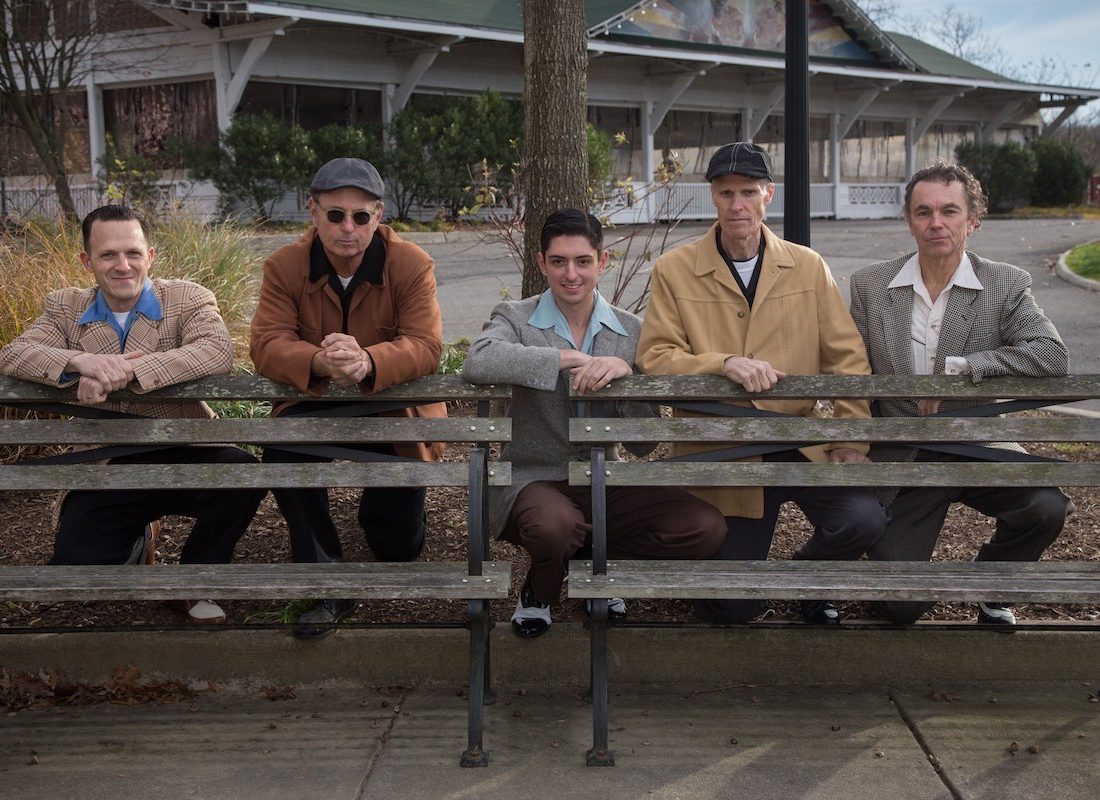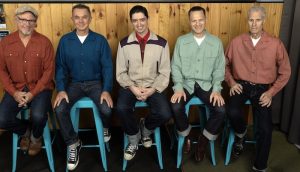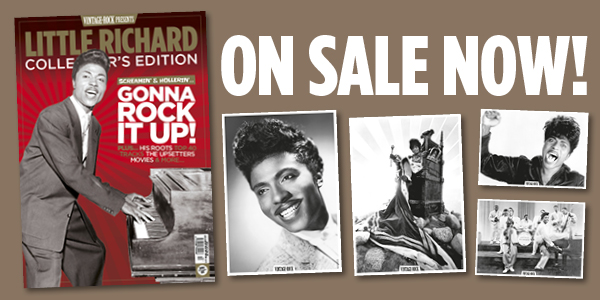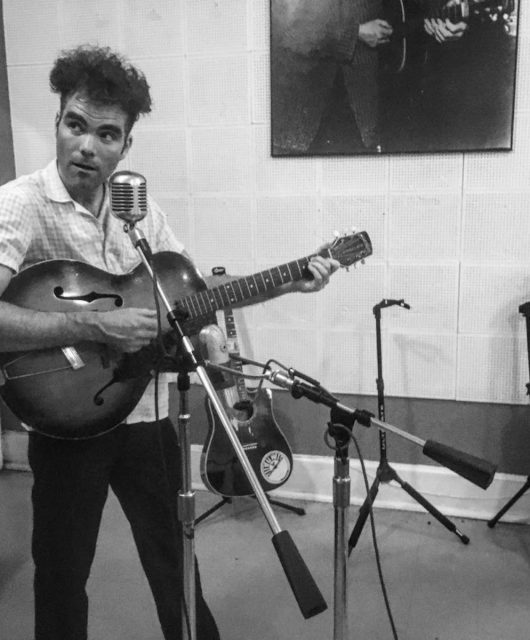Maryland might be the eighth smallest state in the union, but there’s one quintet making a big noise on the scene. We meet The Rock-A-Sonics ahead of their European debut this winter… Words by David West
It might not rank alongside California or New York in the popular imagination as US states with a vibrant and rich musical history, but the likes of Tori Amos, Frank Zappa, and legendary swing drummer Chick Webb all hailed from Maryland. Now The Rock-A-Sonics are doing their bit to keep their home state on the rockin’ map.
“There’s lots of good bands and music fans in our area,” says bassist Louie Newmyer. “We don’t see many rockabillies in attendance like there were in the 90s, but thankfully there’s plenty of people that support roots music shows, and there’s a healthy dance community, too.”
Making dancefloors jump, The Rock-A-Sonics – Newmyer, frontman Willie Barry, lead guitarist Eric Hurtt, drummer Tommy Bowes, and saxophonist and pianist Kim Reynolds – deliver their blend of rockabilly, country, and atomic rock’n’roll on stages from The Nashville Boogie to The New England Shake-Up.
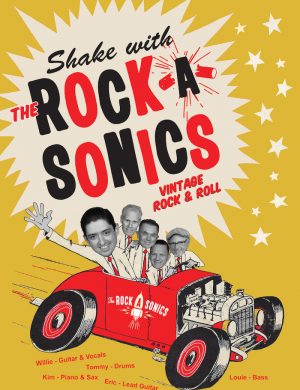
How were you all first introduced to roots and rockabilly music?
Eric: As a kid, there were two records of my dad’s that were my favourites to listen to. One was Elvis’ Golden Records and the other was a record put out by a Dixieland combo at his high school in the late 50s called the Hill School Titans. I feel like both of those records really set the tone going forward, and even as I got into punk and what was then modern/contemporary music, my interests leaned heavily towards those more traditional sounds.
Willie: I have always been aware of early artists like Elvis Presley, Patsy Cline and Hank Williams and enjoyed them, but I’d say the big eye opener was when I saw Jerry Lee Lewis live on The Johnny Cash Show performing Whole Lotta Shakin’ Going On. Through Jerry Lee I found Sun Records and it snowballed from there for me.
Tommy: The first record I purchased was The Rolling Stones US edition, released May 1964, at which point I knew I wanted to be a drummer. My brothers and sisters brought home Meet The Beatles about the same time, which was a heavy influence. In addition, they were bringing Elvis, Bob Dylan and Beach Boys records home, all of which made a huge impression on me.
Louie: In the DC area we could see Danny Gatton, Roy Buchanan, Robert Gordon, Go Cat Go and Tex Rubinowitz all the time. The old Twist And Shout club booked many legends of R&B, rockabilly, blues and roots music. It was a very healthy scene.
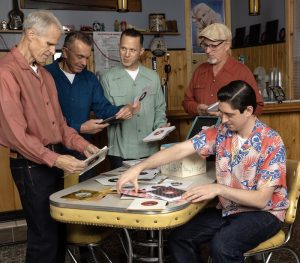 How did The Rock-A-Sonics first get together?
How did The Rock-A-Sonics first get together?
Kim: The band had been in existence for about a year without me, lost as it were. Then Tommy suggested that I be brought in, for which I’ll always be grateful.
Eric: We first came together as part of an annual Buddy Holly tribute that Louie and Tommy have had a hand in organising. They had caught wind of Willie, this young guy who was performing on the street up in Frederick, Maryland, singing a bunch of Johnny Cash and Elvis tunes. Louie brought me in as part of the backing band for Willie, and we all just hit it off musically so we started scrounging for gigs and adding more and more songs to our repertoire.
Louie: Tommy Bowes and I had been playing together for a few years in a couple of bands. In 2014, we were looking for talent for an annual Buddy Holly tribute show we produced. We heard about a rockabilly kid who played on the streets of Frederick, so we – along with Eric Hurtt who we knew as an authentic guitarist from another band around town – agreed to get together for a rehearsal. This was intended to be a one-off, but then magic happened, so we formed a band. A year later, we added Kim Reynolds on piano and in the last few years he has added steel and sax to his arsenal.
Did you start playing standards or were you writing music from the very beginning of the band?
Eric: We started playing covers. We would all make suggestions and sort of figure out what worked the best for us as a band.
Willie: A lot of time was spent during our first rehearsals experimenting with random songs we knew to see how they sounded, or we would jam on material that we could potentially add to our repertoire. We still get off-track every once and in a while. Ha!
How does songwriting process work in The Rock-A-Sonics?
Eric: Willie will usually bring in the lyrics and an outline of the chords and overall song structure. That’s typically how we start. As we begin working the songs over, each of us will have ideas about our own parts as well as each other’s. Sometimes the songs end close to where they started, other times they evolve quite a bit before we feel like they settle into the right groove.
How did you connect with Swelltune Records and Jet Tone Studios for your 2021 EP Ain’t No Solid Sender?
Willie: We knew Beck [Rustic, owner of Swelltune Records] and Shaun [Young, owner of Jet Tone Studios] already through Viva Las Vegas and The New England Shake-up. We have always admired Beck’s work ethic and taste in music, so making a record with her naturally seemed like the right thing to do.
Louie: Besides the Ain’t No Solid Sender EP, we recorded four songs for two 45s. It’s taken a long time to get them released because of the vinyl slowdown. We’re happy to mention Wild Man, our first 7″, is coming out on Swelltune this December.
What overall sound were you after in the studio for the EP?
Eric: I was always much more interested in a live performance vibe than something studio-based. I tend to feel that when you get into the mindset of being able to come back in and patch or re-record individual parts, then you tend to approach the recording process more like everything is replaceable.
Willie: Recapturing that retro sound is a good way to describe what we’d like to achieve, along with the feel of what we get when we play live. We want to sound authentic to the music we know and love.
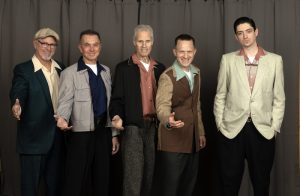 How do you balance your own material and covers when playing live?
How do you balance your own material and covers when playing live?
Eric: This really depends on the venue. For example, if we are playing a swing dance, we’ll have a different mix of songs in our sets than if we are playing a bar gig, concert, or car show. It also depends on whether we are playing a single set versus three or four.
Willie: We generally try to play as many of our originals as possible but sometimes, as Eric said, we have a limited amount of time. We also mix in a lot of obscure covers.
What sort of venues does the band tend to play? Do you have a typical audience at your shows?
Eric: We get a lot of dancers at our shows, which is great. This is certainly in part because we play a fair number of swing dances in the area, in addition to bar and club venues. I think we all consider Hank Dietle’s Tavern to be the band’s ‘home’. Dietle’s is an old roadhouse on the edge of Rockville, Maryland, which dates back to the early 1900s. A few years ago, it suffered a fire and Tommy, our drummer, along with his wife and another partner, stepped in to save it. This has become a great spot for roots music of all types, with both local and out-of-town bands every night of the week.
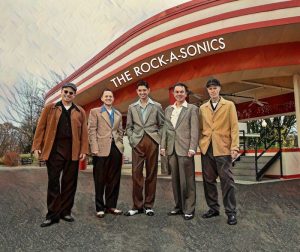 What have been some of the highlights of life with The Rock-A-Sonics?
What have been some of the highlights of life with The Rock-A-Sonics?
Eric: We’ve had some great festival opportunities that have allowed us to reach audiences well beyond our local venues: The New England Shake-up, Viva Las Vegas and The Nashville Boogie. We’re looking forward to our first trip to Europe this winter; we’ll be playing in Spain at the Rockin’ Race Jamboree.
And what about lowlights? Has anything ever gone pear-shaped?
Eric: Probably cramming five of us into a single hotel room would count as a lowlight. I think another lowlight would be having one of our cars towed while we were playing an out-of-town gig.
Do you have any big plans in the pipeline for next year?
Kim: To rock on as much as we can – we started to record an album in December.
Eric: Working on more originals and recording. And hopefully some more festival opportunities abroad!
Check out The Rock-A-Sonics on Instagram here
Get the lowdown on when rockabilly shook the world with our 13 Minute Read

